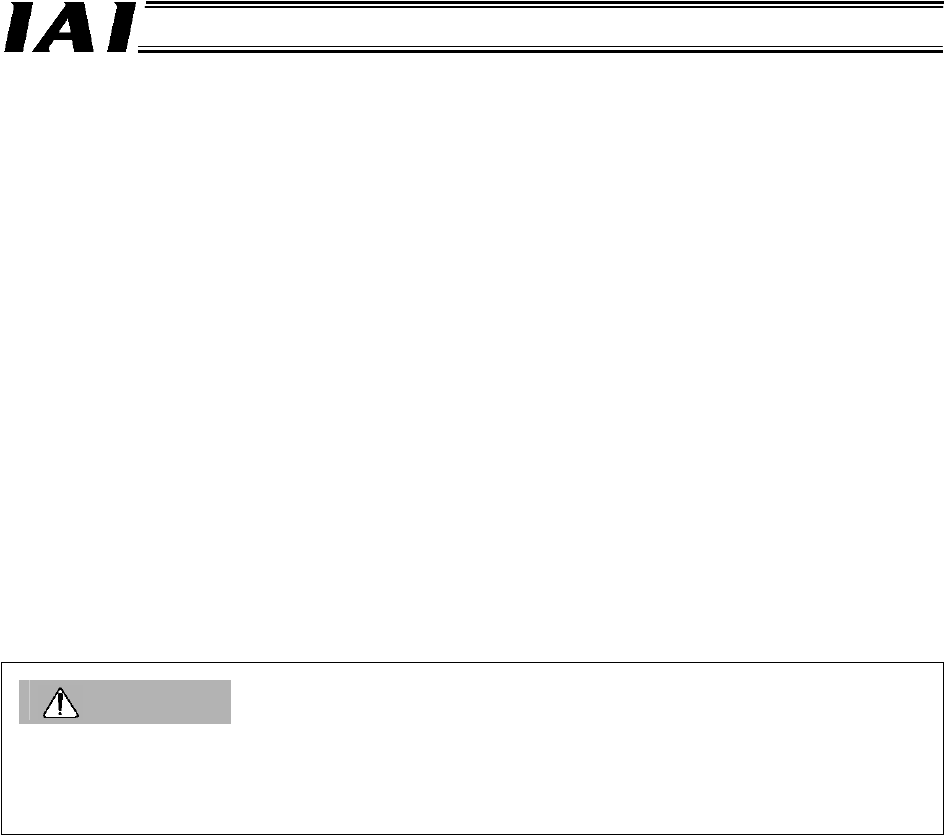Manual
Table Of Contents
- 1. Overview
- 2. Specifications and Name of Each Part
- 2.1 General Specifications
- 2.2 External Dimensions
- 2.3 Name and Function of Each Part
- [1] Gateway status indicator LEDs
- [2] SIO communication status LEDs
- [3] Mode setting switch
- [4] External port switching input
- [5] Controller communication lines
- [6] DeviceNet communication connector
- [7] Baud-rate setting switches
- [8] Node-address setting switches
- [9] DeviceNet communication status LEDs
- [10] Port switch
- [11] Teaching pendant/PC connector
- [12] Power-supply input
- 3. Installation and Noise Elimination Measures
- 4. Wiring
- 4.1 Overall Configuration
- 4.2 I/O Signals of Gateway Unit
- 4.3 Design of SIO Communication Network (SIO Communication)
- 4.3.1 Wiring
- (1) Basics
- (2) Linking PCON/ACON/SCON controllers via SIO communication
- (3) Linking ERC2-SE controllers via SIO communication
- (4) Linking ERC2-NP/PN controllers via SIO communication
- (5) Wiring the emergency stop (EMG) circuit
- [1] Example of cutting off drive signals
- [2] Example of cutting off motor drive power
- 4.3.2 Axis Number Setting
- 4.3.1 Wiring
- 4.4 How to Connect Teaching Tools When Grounding the Positive Terminal of the 24-V Power Supply
- 5. Overview of DeviceNet
- 6. Address Configuration of Gateway Unit
- 7. Communication Signal Details
- 7.1 Overview of Communication Signal Timings
- 7.2 Communication Signals and Operation Timings
- (1) Controller ready (PWR)
- (2) Emergency stop (EMGS)
- (3) Alarm (ALM)
- (4) Reset (RES)
- (5) Pause (STP)
- (6) Moving (MOVE)
- (7) Servo ON command (SON)
- (8) Home return command (HOME)
- (9) Positioning start (CSTR)
- (10) Position complete (PEND)
- (11) Command position number (PC1 to PC512)
- (12) Completed position number (PM1 to PM256)
- (13) Zone (PZONE, ZONE1, ZONE2)
- (14) Jog + command/jog- command (JOG+/JOG-)
- (15) Jog/inching switching (JISL)
- (16) Teaching mode command (MOD)
- (17) Position data read command (PWRT)
- (18) Forced brake release (BKRL)
- 7.3 Basic Operation Timings
- 7.4 Command Transmission
- 8. Network System Building Procedure
- 8.1 Procedure
- 8.2 Settings for Controller Communication
- 8.3 Setting the Gateway Unit and PLC Master
- 8.4 Assigning the Master PLC Address by Free Assignment
- 8.5 Assigning the Master PLC Address by Fixed Assignment
- 9. Example of DeviceNet Operation
- 10. Troubleshooting

57
DeviceNet Gateway
6.3 Command Specification Mode
In this mode, two patterns can be combined, including the pattern in which the actuator is operated by
specifying the target position data in numerical values and specifying all other positioning data using
position numbers (simple direct operation), and the pattern in which the actuator is operated by specifying
position numbers only (positioner operation).
You can also use request commands to read/write the position table, monitor the current value, and
broadcast commands, among others.
Two operation patterns are available, including the “positioner operation” pattern in which the actuator is
operated by specifying position numbers, and the “simple direct operation” pattern in which the actuator is
operated by specifying the operation data directly in numerical values, while specifying all other items
including the speed, acceleration/deceleration, positioning band, and current-limiting value for push-
motion operation, using position numbers.
A desired axis configuration can be designed using one or both of the two operation patterns. If the two
operation patterns are combined, you must assign the axes sequentially from those conforming to the
positioner operation pattern, followed by the axes conforming to the simple direct operation pattern.
The command specification mode is further classified into the Large mode (160 bytes of inputs and 160
bytes of outputs), Middle mode (128 bytes of inputs and 128 bytes of outputs), and Small mode (64 bytes
of inputs and 64 bytes of outputs), according to the size of assigned areas. Up to 16 axes can be
connected in this mode.
You can also use request commands to read/write the position table (positioner operation only), read the
current position, and broadcast commands (positioner operation only), among others.
Caution
The position table can be rewritten only via positioner operation. Take note that the position table
cannot be rewritten more than 100,000 times or so.
If there are not enough positions to be registered, use the position table rewrite function to operate the
actuator indirectly via numerical specification.










